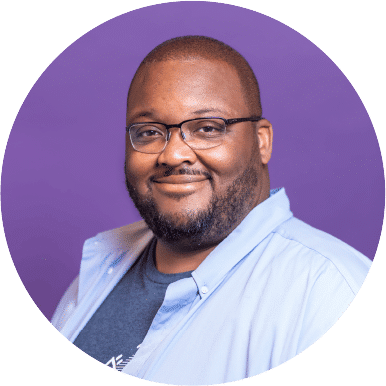In the first installment of this blog series on hiring bias, we discussed how to become aware of nine of the most common types of unconscious bias in hiring. In this second installment, we’ll examine some techniques you can use to mitigate hiring bias across your organization.
Remember that we all have unconscious bias, and it’s going to crop up from time to time. It’s not about being perfect; it’s about maintaining your awareness and keeping yourself in check.
1. Educate yourself.
The first step toward removing bias in hiring is to have a solid understanding of the types of unconscious biases that can thwart our efforts to make good hiring decisions. Again, our previous blog on the subject is a great place to start!
Look to reputable sources when developing your own unconscious bias in hiring training. For example, the University of California San Francisco has comprehensive resources about unconscious bias based on academic and scientific research. For less academic, more informal resources, you can also look to reputable podcasts to increase your understanding, like NPR’s TED Radio Hour.
2. Educate your staff.
It’s a good idea to have unconscious bias training for hiring managers and anyone who will be conducting interviews for your company. Make sure to be empathetic in your training. Remind your staff that everyone has unconscious bias. We all need training to be able to recognize it, and you’re not accusing or blaming anyone.
Of course, at times, this may be easier said than done because people can get defensive in the face of what they might consider to be accusations. Harvard Business Review suggests: “Strike a careful balance between limiting defensiveness about unconscious bias while communicating the importance of managing bias.”
As a leader, you’ll need to meet people where they are in terms of their understanding of unconscious bias. Embrace any and all questions they have. The idea is to use unconscious bias in hiring training to give your team an informed approach going forward.
Once your team has bought into your company’s philosophy on how to avoid bias in hiring, you can work from a shared understanding of what unconscious bias is. When everyone is aware of how to recognize unconscious bias in themselves, they’ll also be able to hold each other accountable and reduce bias in recruitment and selection.
3. Create an Ideal Candidate Profile.
Before you even post a job, take the time to create an Ideal Candidate Profile and use it to benchmark all your candidates equally. Think about what your ideal candidate would be like. Brainstorm the strengths you’d like the candidate to have outside what will be listed in the job description. Determine the skills, talents, and behaviors you’d like to see in a new hire.
Creating an Ideal Candidate Profile for each role will make it easier for you to commit to a set of objective criteria. This profile should serve as your goalpost guiding your hiring decisions. Remember: You shouldn’t move the goalpost for each candidate.
CareerPlug has created a free Ideal Candidate Profile template that you can download. It’s based on the one we use in our own hiring process.
4. Measure using objective criteria and assessments.
So you have your Ideal Candidate Profile — but how are you measuring and scoring your candidates’ abilities? Implementing an applicant tracking system like CareerPlug can help you measure objective criteria using tools like prescreen questions and assessments. This allows you to evaluate all candidates consistently throughout the hiring process.
If the job requires a wide variety of math/verbal skills, you might consider giving candidates a skills assessment (CareerPlug has standard math/verbal assessments that can be used for many positions). You could also give an assessment designed specifically for the role. For example, when we hire software engineers, we assign candidates a coding challenge.
5. Ask all candidates the same interview questions.
In a structured hiring process, every step in the process should have a goal. The goal of an interview should be to determine whether or not a candidate is actually qualified for a job.
Before your first interview, come up with a list of specific questions that are role-related and general questions that are not role-related to help you reveal whether or not a candidate is capable of performing the job. When you don’t come up with a list of questions beforehand, you risk not knowing whether a candidate is actually qualified for a job. This could lead to decisions made based on gut feelings rather than reasoning.
Use an interview scorecard to track candidates’ responses to interview questions and compare them to your benchmarked answers.
6. Make the first interview a phone screen.
Have you ever watched The Voice? It’s a singing competition show in which the contestants’ first audition is a “blind audition,” meaning that the judges can’t see the person singing. They’re forced to make their selections based only on the contestants’ vocal abilities and not how they look.
We think you should implement a type of “blind audition” in your hiring process: a phone screen. A phone screen is a great way to ensure that your first impression of a candidate is free from superficial biases that have to do with appearance and nonverbal cues.
Another method of “blind hiring” involves hiding resume details like a candidate’s name, college, address, hobbies, or graduation year – in other words, the things that might offer clues about a candidates ethnicity, gender identity, age, or socioeconomic background.
7. Take detailed notes for every candidate.
Relying on memory is a huge mistake when evaluating candidates because our memories can be especially susceptible to the influences of biased thinking. Take detailed notes immediately following every interaction you have with a candidate. Whether you take notes in a spreadsheet, a Word document, or an applicant tracking system, you should have documentation somewhere you can easily revisit.
A word on “gut feelings”
Lastly, you might be reading this and wondering if there’s any place in a structured interview process for gut feelings. And there is (sort of!).
While gut feelings are important, it’s not a good idea to hire strictly with your gut. This is because a gut feeling can be created by unconscious bias! This is not to say that we should ignore our instincts. In fact, our instincts are usually a sign that we need to learn more about a candidate. A good hiring process gives us a structured way to validate our instincts and ensure they’re not biases in disguise.

Take Action
- Invest in unconscious bias training for your hiring managers.
- Before you post your next job, create an Ideal Candidate Profile and a list of pre-determined questions to help you evaluate whether a candidate fits the profile.
- Make the first interview in your hiring process a phone screen.



























